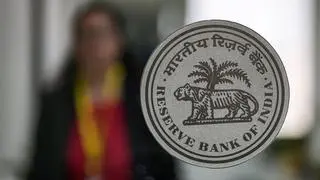Discussing at length the changes that have engulfed the credit rating industry and the dynamics around ESG ratings, Gurpreet Chhatwal, MD, Crisil Ratings, is confident that the credit ecosystem would be further strengthened. Edited excerpts:
The ratings industry has seen a sea change since 2018, which was important for credibility enhancement…
Indeed. In 2018 and 2019, we saw sharp rating downgrades in some large companies. While Crisil had not rated most of these companies, the credit rating industry came under a lot of scrutiny.
The balance sheets of banks were also creaking then, under the weight of significant non-performing assets (NPAs). All that led to the credit cycle that we saw thereafter.
But those rough times were salutary as well, in that many in the industry were forced to adopt best practices. The regulator, too, ushered in several changes, requiring CRAs [credit rating agencies] to increase their disclosure standards, strengthen rating process, and enhance governance standards. So, yes, the seminal changes have meant the ratings industry is in a better shape than five years back.
Who rates the raters?
It is very easy for anyone to rate a rater, but, unfortunately, very few try. Each rating agency has a scorecard derived from three quality metrics: the default rate, the stability rate, and sharp rating actions (as a proportion of all rating actions). We began disclosing our performance voluntarily, well before it was mandatory — way back in 2004, when we began publishing the CRISIL Ratings Default and Transition Study. These quality metrics make it easy for investors and other stakeholders to judge the performance of credit rating agencies.
ESG ratings remain a grey area. How are you dealing with it?
SEBI recently published a set of circulars on ESG rating providers (ERP). Clearly, the regulator believes ratings are easier to understand and has standardised the ESG scale (0-100). ESG rating is a complex exercise where one must look at more than 100 parameters to arrive at the rating. It involves comprehensive benchmarking of the issuer’s performance with that of peers to ensure consistency in rating assessments. Indian companies have begun disclosing their performance on various ESG parameters. This needs to be assessed by an independent and well-equipped ERP that can come up with an objective ESG rating. Further, mutual funds are also setting up ESG funds. SEBI’s regulations are aimed at improving transparency, reliability and bringing in standardisation.
Why did SEBI opt for local regulations for ESG rather than adopting a global framework?
Country-specific nuances, such as the stage of economic development and the imperatives thereof, have a bearing on ESG assessments. There are the specific environmental goals set by the government that need to be countenanced, such as Net Zero by 2070 and 500 gigawatt of renewable power by 2030. There are social aspects that must be contextualised, based on our developmental imperatives. SEBI has, therefore, rightly advised incorporation of indigenous considerations, both from disclosure and ESG ratings perspectives, for issuers raising money from the domestic markets or from institutions.
Global ERPs are free to provide ESG assessments of Indian issuers for use by the global investing community. However, investors such as mutual funds in India, specifically those having ESG schemes, need to use and disclose ESG ratings from SEBI-registered ERPs. This horses-for-courses approach is required.
The pick-up in capex seems more like replacement capex…
India Inc has de-levered significantly. The bounce-back from the pandemic-driven disruptions was way sharper than what one sees in normal economic cycles.The upshot is that demand has driven up industry utilisation rates close to the triggers that have heralded private sector investment cycles in the past. But we are not seeing the animal spirits of circa 2011 — at least not yet. We are seeing more of brownfield expansions.
Institutional funding is more broad-based now, compared with the predominance of mainstream banking earlier…
Yes, now there are myriad institutions. There are also funding options through pension entities, insurers, alternative investment funds, private equity and family offices. These investors are more comfortable lending to entities with high-quality credit profiles and investing in the debt instruments of such entities. We are also seeing new financial institutions dedicated to improving credit delivery, especially to the infrastructure sector, and growth in existing financial institutions.
Pooled vehicles such as INVITs and REITs are gaining currency and drawing interest from private equity and foreign pension funds seeking attractive long-term opportunities. At some point, domestic patient capital (from insurers and pension funds) will start enhancing their share of Indian infrastructure investments.
Indian banks have also improved the resilience of their balance sheets, reduced the concentration risk by increasing focus on retail loans, strengthened risk management and credit appraisal, and improved their profitability and capitalisation.
Gross NPAs have fallen to a decadal low and will fall further.












Comments
Comments have to be in English, and in full sentences. They cannot be abusive or personal. Please abide by our community guidelines for posting your comments.
We have migrated to a new commenting platform. If you are already a registered user of TheHindu Businessline and logged in, you may continue to engage with our articles. If you do not have an account please register and login to post comments. Users can access their older comments by logging into their accounts on Vuukle.